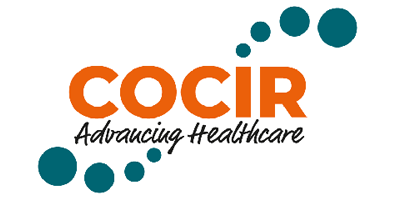Frequently Asked Questions.
The NHPig project is an innovative and ambitious initiative that seeks to develop new methods and technologies for reducing the use of animals, especially non-human primates in drug development. The project involves a multidisciplinary and cross-sectoral consortium of researchers, industry partners, patient organizations, and ethical and regulatory experts. The project aims to deliver benefits for human health, animal welfare, and scientific excellence.
If you do not find the topic you are interested in among the questions below, visit the new chatbot that uses Artificial Intelligence to answer all your scientific questions about Göttingen Minipigs in biomedical research.
Theme: Ethics and Animal Use
Why not use more ethical methods than animals for research?
Reducing the use of animals for research is an important goal. However, the development of in vitro/in silico models for human safety assessment remains challenging due to the complex biological responses observed in various organ systems following drug treatment. As a result, laboratory animals continue to be necessary for the safety testing of new therapeutics and innovative medical technologies. It’s crucial that non-animal approaches reach the required level of maturity and validation to ensure that only safe treatments reach patients and that patients have timely access to the most innovative therapeutics. Efforts are ongoing to advance non-animal methods, also within the NHPig project, and as these approaches progress, the reliance on animal testing can be minimized, further aligning with ethical and scientific imperatives.
What are the benefits of using pigs instead of non-human primates? Specifically, aside from legal compliance, are there additional advantages for pharmaceutical companies to using minipig and micropig models?
EU legislation requires the replacement, reduction, and refinement of animal use in research, guided by the ‘3Rs’ principle. This includes a specific emphasis on limiting the use of non-human primates (NHPs) unless scientifically justified. The NHPig project provides advantages to pharmaceutical companies with its particular focus on limiting the use of NHPs.
Although the pharmaceutical industry seeks to enhance laboratory conditions for NHPs, addressing their natural needs remains a challenge due to their instinctive behaviours, such as foraging in large territories in the wild. In contrast, utilizing domesticated pigs, having been adapted to captivity over generations, enables researchers to work with animals better suited for laboratory conditions, which could yield more reliable results.
Sourcing pigs from European breeders shortens transportation time to test sites compared to importing NHPs from Asia or Mauritius, which further enhances animal welfare and improves training and collaboration between animals and caretakers, potentially minimizing biological variation and elevating the quality of study results. This may even lead to a reduction in the overall number of animals required for testing. Additionally, pigs can be genetically modified to better mirror human physiology, disease mechanisms, and responses to pharmaceutical drug candidates.
Overall, the NHPig project can contribute to the reliability and efficiency of nonclinical safety assessments and provide pharmaceutical companies with more consistent and predictable research outcomes.
Why is it more ethical to use pigs than NHPs in research and development?
Substituting pigs for NHPs in research and development aligns with ethical considerations for several reasons. The surge in NHP prices during the COVID-19 pandemic, driven by increased demand for new vaccines, has raised concerns about the inadvertent use of wild-caught or non-purpose bred NHPs. This poses ethical issues and elevates the risk of compromised animal welfare, while also increasing the potential for skewed results, undermining confidence in study conclusions.
In contrast, minipigs, derived from farm pigs, have been domesticated over centuries of husbandry and are further bred by well-controlled EU-based breeders, making them more domestically adapted compared to NHPs. By focusing on fulfilling the natural needs of pigs, we can ensure high-quality lives for the animals involved in the NHPig project. This involves implementing appropriate training and procedural adaptations, group housing for social interaction, and providing enrichment materials such as straw and toys to support their behavioural well-being.
These ethical considerations highlight the welfare and practical adaptability of pigs in a laboratory setting, promoting a more ethical approach to research and development.
Is it ethical to use pig disease models?
Using pig disease models can be considered ethical if the model does not cause substantial harm to the welfare of the pigs, and if potential side effects can be minimized with proper medication and care. Furthermore, if patients can benefit from new therapeutics with a more attractive efficacy-safety profile derived from the use of these models, it would be ethical to utilize pig disease models in research and development.
Is it ethical to use genetically modified models?
Use of genetically modified pig models can be ethical if it adheres to established ethical guidelines and regulations. The ethical use of such models needs to ensure that the modification does not cause unnecessary harm to the animals and that their welfare is appropriately safeguarded. Additionally, if the research using these models aims to advance medical knowledge, develop new treatments, or improve human health outcomes, the ethical use of genetically modified pig models can be justified. Genetically modified pig models that precisely resemble human disease mechanisms are expected to give results with a high predictive value for patients.
Care will be taken to design breeding strategies minimizing the number of animals required.
When can we stop using animals in drug development?
We consistently strive to minimize the use of animals in drug research and development, and every instance of animal use must be justified. However, the intricate nature of organ toxicity and the interplay between organ systems means that it will likely take many years before we can fully investigate these complex physiological and toxicological processes using in vitro and in silico methods alone, which may delay the complete cessation of animal use in drug development.
What is done to ensure that the natural behavior of the pigs is accommodated?
We strive to accommodate the natural behaviour of the pigs by enriching the housing conditions by use of group housing, training and habituation. We aim to alleviate discomfort, such as that caused by taking a blood sample. For instance, we train the animals to understand the procedures, effectively teaching them what to expect. Additionally, we employ positive reinforcement techniques, like training a dog, to guide the animals to specific areas for dosing or blood sampling. In many studies, animals receive drug injections, and their responses are measured through analyses of blood and urine samples, body weight monitoring, and assessing effects on the heart, for which we have developed vests that the animals become accustomed to wearing.
Do the pigs suffer?
One of the objectives of this project is to understand if pigs exhibit similar response to medical treatment as NHPs and humans. We will have data to guide dose setting, minimizing the expectation of severe clinical signs in the NHPig project. Additionally, our studies are designed to initially test dose levels in a few animals before escalating to a larger group, ensuring a cautious approach. Should pigs experience symptoms resembling those seen in patients, we promptly lower the dose and provide medication to alleviate these effects. If any clinical signs prove severe, we either discontinue the medication for the individual animal or the entire group.
The animals may encounter symptoms analogous to those observed in patients, however we are equipped to manage these issues by providing appropriate foods and adjusting medication, much like the approach for individuals with similar symptoms.
Furthermore, in some studies, we may sedate the animals for specific examinations, acknowledging that they may feel discomfort like that experienced by humans undergoing anesthesia.
What is the worst a pig will experience in a NHPig experiment?
In an NHPig experiment, the worst experience for a pig would typically be limited to potential clinical signs associated with the administered substances. These may include symptoms such as decreased activity or decreased body weight, which, if observed, are promptly managed by adjusting medication and providing appropriate care. Handling of known side effects is thoroughly described in the study protocols. In the event of severe side effects, the medication may be discontinued for the individual animal or the entire group, ensuring the welfare of the pigs involved in the study. Throughout the study, every effort is made to prioritize the welfare and minimize any adverse experiences for the pigs involved
How does the NHPig project ensure that the pigs are only used when there are no other alternatives?
The NHPig project ensures that the use of pigs in studies is justified through a comprehensive evaluation process. This assessment considers the specific characteristics of the test compound, the research questions at hand, and the absence of any other relevant and suitable alternative animal model or method. Moreover, one of the primary objectives of the NHPig project is to develop in vitro methods for investigation of organ toxicity.
The justification for using pigs is evaluated by an internal expert group, either at the pharmaceutical company or the contract research organization (CRO) conducting the toxicity study. Additionally, an independent Ethics and Animal Advisory board is assigned to the projects to guarantee the integration of the latest in vitro/in silico/ex vivo, and 3R (replacement, reduction, and refinement) approaches within the NHPig project. This dual evaluation process ensures that the use of pigs is considered only when no viable alternatives exist and aligns with ethical and scientific standards.
How many pigs are used in this project?
Approximately 270 pigs.
Theme: Project Importance and Public Benefit
Why is the project important?
The project has significant importance due to the legal obligation to minimize the use of laboratory animals, particularly NHPs. By accumulating substantial knowledge about the pig model, we aim to potentially replace NHPs with pigs wherever scientifically justifiable. This endeavor aligns with the ethical requirement to reduce the use of NHPs in research and underscores the project’s broader impact on advancing animal welfare and scientific progress.
What does the project aim to achieve?
The primary aim of the project is to gather comprehensive knowledge about pigs, with the ultimate goal of replacing NHPs with pigs whenever scientifically appropriate. This endeavor reflects a commitment to ethical and responsible research practices while striving to advance scientific understanding and innovation.
How can you defend spending resources and money on developing and characterizing pig models instead of focusing on non-animal approaches ?
The NHPig consortium is committed to advancing biomedical research while adhering to the highest standards of animal welfare. Our primary objective is to expand, share, and implement biological knowledge of mini- and micropig models to find alternatives to nonhuman primates (NHPs) in non-clinical safety testing. The multifaceted nature of organ toxicity and the interplay between organ systems means that it will unfortunately take many years before we can fully investigate these complex physiological and toxicological processes using in vitro and in silico methods alone.
The NHPig project aligns with the EU policy of reducing the use of non-human primates and the 3Rs principles: Replacement, Reduction, and Refinement of animal use in biomedical research. NHPig will do this by performing a detailed characterisation of minipigs that are already used in research and address knowledge gaps e.g. on pigs’ immune system. We will also develop new tools to further study non-clinical safety issues in minipigs, including biomarkers for liver and kidney toxicity. Part of the project will focus on developing non-invasive technologies that would allow the physiology and behaviour of mini-/micropigs to be monitored continuously in undisturbed animals. Overall, the project aims at improving the evaluation of new therapeutics for patients while committing to the 3Rs principles. To ensure animal welfare in the NHPig project, an animal welfare working group is involved in the planning of each pig study with the purpose of refining, guiding and aligning all pig-related processes such as frequency of clinical observations, monitoring of side effects, humane endpoints, sedation and anesthesia, training, socializing, stimulation and bedding.
The pig is a highly sentient species and we understand and respect the concerns expressed by external stakeholders. In addition to the primary objective of reducing the use of NHPs, part of the NHPig project is aiming at reducing the number of animals in biomedical research by developing and validating robust porcine in vitro models. Validation of the in vitro models vs. the corresponding in vivo models will provide the basis for the selection of reliable non-animal models and contribute to the agenda of reducing the need for animal testing.
The NHPig consortium remains committed to ethical research practices and the welfare of all animals involved in our studies. We welcome ongoing dialogue with our external stakeholders to address concerns and work towards our shared goal of reducing animal use in research.
How does the project benefit the patients?
The NHPig project benefits patients by contributing to the development of safer and more effective treatments. By exploring the similarities between pigs and humans in terms of drug responses and side effects, the project helps in generating data that can lead to the improved prediction of drug efficacy and safety in humans. Ultimately, this can result in the development of better therapies, potentially leading to enhanced patient outcomes and a higher standard of care.
What will EU taxpayers get out of a project like this?
A project like NHPig offers EU taxpayers several benefits. Firstly, it aligns with ethical and regulatory standards, ensuring that taxpayer funds are utilized responsibly and in accordance with animal welfare regulations. Additionally, the project’s focus on reducing the use of NHPs in research supports a more ethical approach to scientific inquiry, reflecting the values of many EU citizens. Furthermore, the potential for improved drug development and testing methods can lead to safer and more effective treatments, ultimately benefiting the health and well-being of EU citizens. This aligns with the broader goal of advancing medical research to address the needs of society and the healthcare system.
Why is the EU involved in the project?
The EU’s involvement in the project is crucial to foster interdisciplinary collaboration across various sectors. Generating adequate knowledge to potentially replace NHPs with pigs requires a multidisciplinary approach, involving skills from universities, pharmaceutical companies, biotech firms, contract research organizations, and patient organizations. By extending collaborations beyond individual sectors, new essential tools and approaches can be developed that not only reduce the reliance on NHPs but also minimize the use of animals in research overall. This aligns with the EU’s commitment to advancing ethical and innovative research practices while promoting cross-sector partnerships for scientific progress.
Does the NHPig collaborate with animal welfare organizations?
The NHPig consortium is dedicated to enhancing laboratory animal welfare and consistently seeks to improve welfare practices. Many of the project partners have recognized the significant value in collaborating with animal welfare organizations both nationally and internationally. This collaboration underscores the project’s commitment to proactively seek for the highest standards of animal welfare in alignment with animal welfare organizations.
Theme: Research Strategy and Innovations
Why develop mini-/micropig models for animal studies?
Developing mini- and micropig models for animal studies offers several advantages. Their anatomical and physiological similarities to humans make them valuable for studying various diseases, drug responses, and toxicity. Additionally, their manageable size, ease of handling, and relatively low cost compared to non-human primates (NHPs) make them practical and ethical choices for research. Furthermore, their use aligns with the ethical imperative to reduce the reliance on NHPs, contributing to the overall effort to advance more humane and effective research practices in the field of drug development and biomedical research.
What is missing from using pigs instead of non-human primates?
While pigs exhibit numerous biological and physiological similarities with humans, especially in organ systems like the gastrointestinal tract, heart, skin, and immune system, non-human primates (NHPs) are genetically more similar to humans. This genetic proximity in certain cases enables NHPs to better predict human side effects for some pharmaceuticals and technologies compared to pigs. Consequently, despite the valuable parallels between pigs and humans, the genetic closeness of NHPs to humans remains a critical consideration in certain aspects of research and development. The NHPig project is dedicated to exploring strategies and approaches to address some of these challenges, with the overarching goal of reducing the reliance on NHPs in biomedical research and development.
At present, how commonly are mini- and micro-pigs used in non-clinical safety studies by drug companies? What are the barriers to their use? What are the knowledge gaps and how would these be addressed?
The minipig is commonly used in pharmaceutical testing especially for small molecules. The micropig is not yet commercialised and still needs to be characterized and validated before being considered for pharmaceutical development. Clarke et al., 2024 outlines the opportunities, challenges, barriers and knowledge gaps related to use of minipigs in nonclinical pharmaceutical development at
https://www.sciencedirect.com/science/article/pii/S0273230024001703?via%3Dihub.
Theme: Interdisciplinary and Collaborative Approaches
Why use cross-disciplinary approaches?
Developing mini- and micropig models for animal studies offers several advantages. Their anatomical and physiological similarities to humans make them valuable for studying various diseases, drug responses, and toxicity. Additionally, their manageable size, ease of handling, and relatively low cost compared to non-human primates (NHPs) make them practical and ethical choices for research. Furthermore, their use aligns with the ethical imperative to reduce the reliance on NHPs, contributing to the overall effort to advance more humane and effective research practices in the field of drug development and biomedical research.
Why involve so many different disciplines?
Please see the above answer to: Why is the EU involved in the project?
Why is public-private cooperation needed for this research?
Please see the answer above to: Why is the EU involved in the project?
Theme: Funding and Economic Aspects
Who will get money from the project?
The NHPig is a 17.5 mill € project. Approximately 50% of the costs are covered by industry partners, who will provide test material, animal facilities, equipment, nonclinical data. The remaining 50 % is funded by the EU via support to the following universities, research organisations, public bodies, non-profit groups:
Aarhus Universitet, Aarhus C, Denmark
Eidgenoessisches Departement Des Innern, Bern, Switzerland
Karolinska Institutet, Stockholm, Sweden
Katholieke Universiteit Leuven, Leuven, Belgium
Ludwig-Maximilians-Universität München, Munich, Germany
Technische Universität München, Munich, Germany
Universiteit Antwerpen, Antwerp, Belgium
Ustav Zivocisne Fyziologie A Genetiky Av Cr V.V.I., Libechov, Czechia
Veterinaermedizinische Universitaet Wien, Wien, Austria
Small and medium-sized enterprises (SMEs) and mid-sized companies
Avantea SRL, Cremona, Italy
BioTalentum Tudasfejleszto Kft, Godollo, Hungary
Ellegaard Gottingen Minipigs As, Dalmose, Denmark
Etisense, Lyon 8e, France
Mediso Orvosi Berendezes Fejleszto es Szerviz Kft., Budapest, Hungary
Theme: Data Management and Privacy
Will there be clinical patient data in the project?
No, individual clinical patient data will not be part of the project. However, anonymous information in abstract form from groups of healthy volunteers or patients participating in previous clinical trials may be included if available. This approach ensures compliance with data privacy regulations while still leveraging valuable insights from previous clinical studies.
How is patient data protected?
Patient data is rigorously protected in the NHPig project. Only aggregate information from clinical trials will be included, with no individual healthy participant or patient data points being part of the project. This approach ensures strict adherence to data privacy regulations and safeguards the confidentiality and privacy of patient information.
How is the project organized and managed?
The NHPig project is organized and managed through a collaborative and coordinated approach involving various stakeholders. This includes a project management team overseeing the day-to-day operations, logistical and administrative aspects. Furthermore, the scientific and technical experts, corresponding to the steering committee, are leading and coordinating the research activities. The NHPig project has a governance structure comprising an executive committee, consisting of the project management team, the coordinator and the project lead, a steering committee and a general assembly. Two boards: an Ethics and Animal Welfare Advisory Board and a Regulatory Advisory Board will provide strategic guidance and ensure alignment with project objectives. Overall, the organizational and management framework of the NHPig project is designed to facilitate effective collaboration, high scientific standards, and ethical conduct throughout its 5-years of duration.
How will the project disseminate its results and findings?
The NHPig project is anticipated to disseminate its results and findings through various channels to ensure broad accessibility and impact. This may include publishing in scientific journals, presenting at conferences, and sharing insights through workshops and seminars. Additionally, the project will develop a digital platform to make data and findings available, and further collaborate with industry partners to integrate results into drug development processes. This database will eventually be publicly available. Furthermore, engaging with regulatory bodies and policymakers can help ensure that the project’s findings inform future guidelines and regulations. Overall, a comprehensive dissemination strategy will be implemented to maximize the reach and influence of the NHPig project’s outcomes.









Funding acknowledgement
This project is supported by the Innovative Health Initiative Joint Undertaking (IHI JU) under grant agreement No 101165643. The JU receives support from the European Union’s Horizon Europe research and innovation programme and COCIR, EFPIA, Vaccines Europe, EuropaBio and MedTech Europe and Breakthrough T1D and VeriSIM Life.









Funding acknowledgement
This project is supported by the Innovative Health Initiative Joint Undertaking (IHI JU) under grant agreement No 101165643. The JU receives support from the European Union’s Horizon Europe research and innovation programme and COCIR, EFPIA, Vaccines Europe, EuropaBio and MedTech Europe and Breakthrough T1D and VeriSIM Life.
